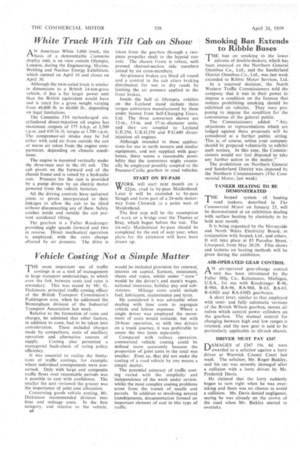Vehicle Costing Not a Simple Matter
Page 42

If you've noticed an error in this article please click here to report it so we can fix it.
THE most important use of traffic costings is as a tool of managementin large transport undertakings, to which even the link between costs and rates is scg-ondary. This was stated by Mr. G. Dickinson, principal traffic costing officer of the British Transport Commission's Paddington area, when he addressed the Birmingham division of the Industrial Transport Association last week.
Relative to the formation of rates and charges, he admitted that other factors, in addition to costs, had to be taken into consideration. These included charges made by competitors, costs of ancillary operation and alternative sources of supply. Costing also permitted a managerial back-check of rating policy efficiency.
It was essential to realize the limitations of traffic costings, for example, where individual•consignments were concerned. Only with large and composite traffic flows over reasonable periods was it possible to cost with confidence. The smaller the unit reviewed the greater was the importance of joint cost allocation'.
Concerning goods vehicle costing, Mr. Dickinson recommended division into time and mileage costs. In the first category, and relative to the vehicle.
a8
would be included provision for renewal, interest on capital, licences, insurances, sheets and ropes, whilst under " crew ". would be the driver's. and mate's wages, national insurance, holiday pay and subsistence. Mileage costs could include fuel, lubricants, maintenance and tyres.
He considered it was advisable when dealing with time costs to segregate vehicle and labour expenses. Where a single driver was employed the movement of costs would coincide, but with 24-hour operation, as with two drivers on a trunk journey, it was preferable to assess the two items separately.
Compared with railway operation. commercial vehicle costing could be defined more accurately because the proportion of joint costs in the total was smaller. Even so, that did not make the costing of a road vehicle by any means a simple matter.
The potential accuracy of traffic costing varied with the simplicity and ' independence of the work under review, whilst the most complex costing problems arose from the transit of smalls and parcels. In addition to involving several transhipments, documentation formed an important element of cost in this type of traffic.




































































































